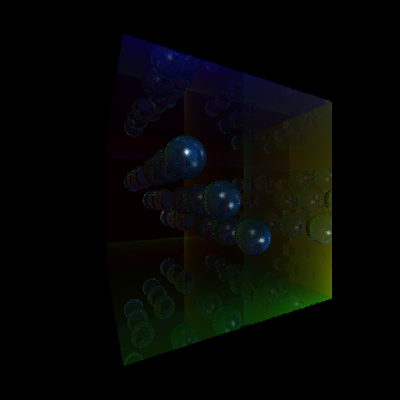First, the easy one: Anti-aliasing. I have been rendering larger images and downscaling them for achieving antialiasing, but now I added long pending support for multiple random rays per pixel. This way, I can achieve arbitrary sampling rates like 5 rays per pixel, rather than relying on rendering larger and larger images.


Of course, nothing nice here, because the running time increases linearly with the number of samples. But here is a theory that I have: on GPUs, larger number of rays per pixel will gather smaller and smaller overhead. Why? Because of ray coherence. Since all these rays travel the same path (mostly), the amount of warp divergence will be very low. In a 2x2 pixel scenario, if we do 8x supersampling for each pixel, the entire warp (8x4 threads) will be well behaved, mostly.
Anyway, now coming to the slightly more obscure improvement. This has to do with an algorithm that I developed for 'seamless' raytracing of point models. Earlier, we had conditions like "if new collision point is within 0.1 units of old collision point of the ray, then ignore this collision point". This is needed because splat based models are not consistent. There can be multiple overlapping splats in the scene, and often, a ray reflected or refracted from one splat, will hit the immediate next splat. This should not happen because its like the ray hitting the same surface twice. Since we are not doing sub-surface scattering :P, we would not like this to happen. But such a naive condition also causes problems with legitimate collisions. For example, we see artifacts at wall corners, and at interfaces of objects where we would expect legitimate ray-hits, but the condition prevents a ray-hit from happening
So, the alternative idea is as follows: Assume the entire scene is made of closed objects. ie: there are no loose hanging objects whose back faces we can see from outside. We add a boolean parameter to each ray, stating which face of an object it would like to hit next (front face or back face). On reflection, this parameter remains same. On refraction, it flips (True to false, false to true). Initially, all primary rays want to hit front faces of objects. Back facing collisions are ignored. Similarly, after the first refraction, objects would like to hit the back face of a splat. This way, we can prevent same-surface collisions. Here is an image illustrating the virtues of this method:





So when are you gonna add HDR rendering support to it?
ReplyDeleteAlready has HDR support. Images are rendered onto 32 bit/channel buffers. I used your EXR save function yesterday to produce my first HDR images. Sadly, that also brings to light some of the rendering artifacts. So not posting that till i get some fixes.
ReplyDelete